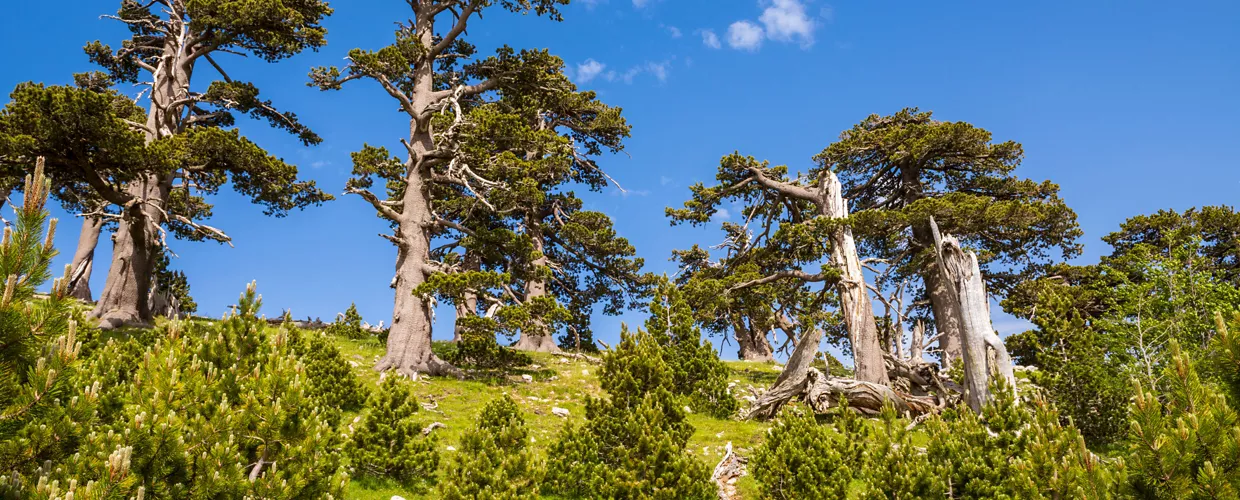
Overview
In this area covered with forests, deeply marked by the man who built walls here, built castles, monasteries, churches, cleared land, raised animals and built villages perched on the mountains, the Pollino National Park was established in 1990. A territory of more than 192 thousand hectares, between Calabria and Basilicata, embraces the area formed by the Pollino and Orsomarso massifs, a mountain range of the southern Apennines with the highest peaks of all Southern Italy. In fact, it contains peaks that exceed 2000 m, from which the gaze ranges over Ionian and Tyrrhenian. Consisting essentially of imposing limestone banks rising above the calm surrounding landscape, the district began its uplift in fairly recent times (around 20 million years ago), as evidenced by the strong features of the relief, not yet attenuated by erosion phenomena. Much of the territory has typical Karst morphology, with dolines, caves and sinkholes, such as the Romito cave, with graffiti dating back to the Upper Palaeolithic, and the Bifurto abyss in the municipality of Cerchiara di Calabria, one of the deepest in Italy. Karsticism is flanked by the imprint left by the last glaciation, with circuses, erratic boulders and moraines. The park's fauna includes some rare species such as the wolf, roe deer and otter. Birds include the great eagle owl, the black woodpecker, the golden eagle and the majestic Egyptian vulture. The variability of climate and altitude determines a great plant biodiversity. At lower altitudes, where human pressure has been greater, Mediterranean scrub prevails with species such as downy oak and holm oak, which in some areas still form extensive forests. Climbing towards the slopes of the massif, between 1000 m and almost until 2000, beech predominates, in some cases mixed with spruce. Also present are the carpino, the cerro, the alder, the maple, the black pine, the Aleppo pine, the badger. The symbol of the area and the park is the mighty loricate pine (Pinus leucodermis), whose name derives from the unmistakable pattern of its bark, evoking the armour of Roman soldiers. A tree of extraordinary adaptability, it is moulded by the fury of the elements into bizarre and diverse forms, so that each specimen represents a kind of unique work. Even after its death (some specimens are over 900 years old), now decorticated, it still stands, calcined by the sun that turns the trunk so white that it becomes one with the limestone rock to which it tenaciously clings.